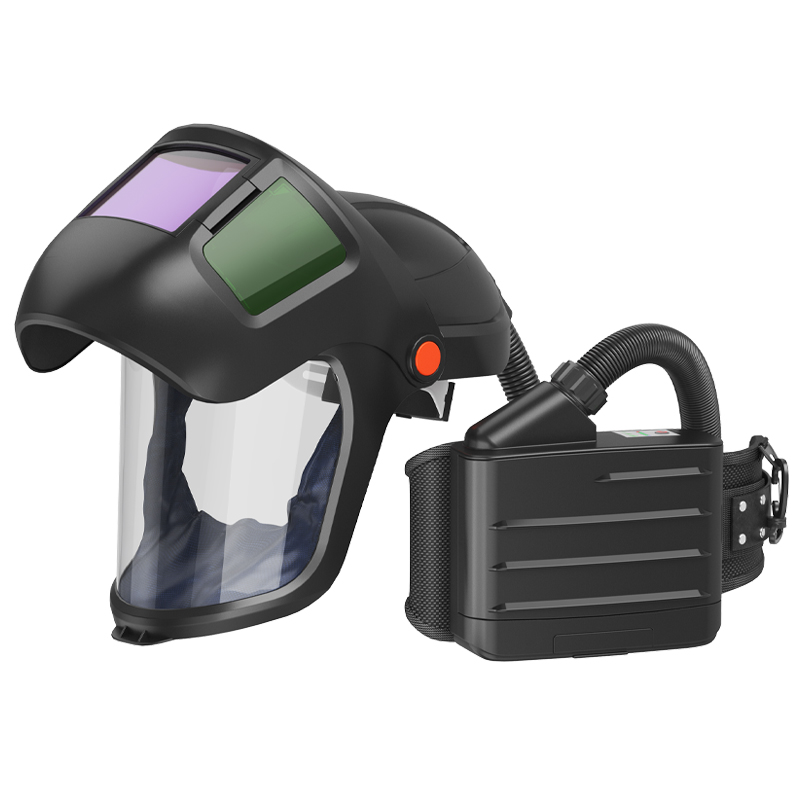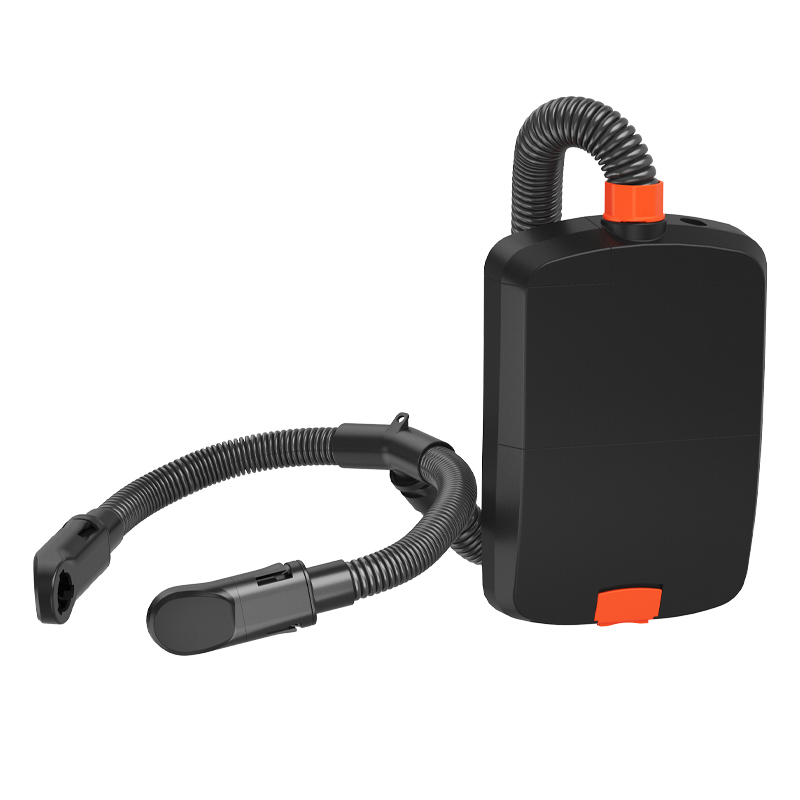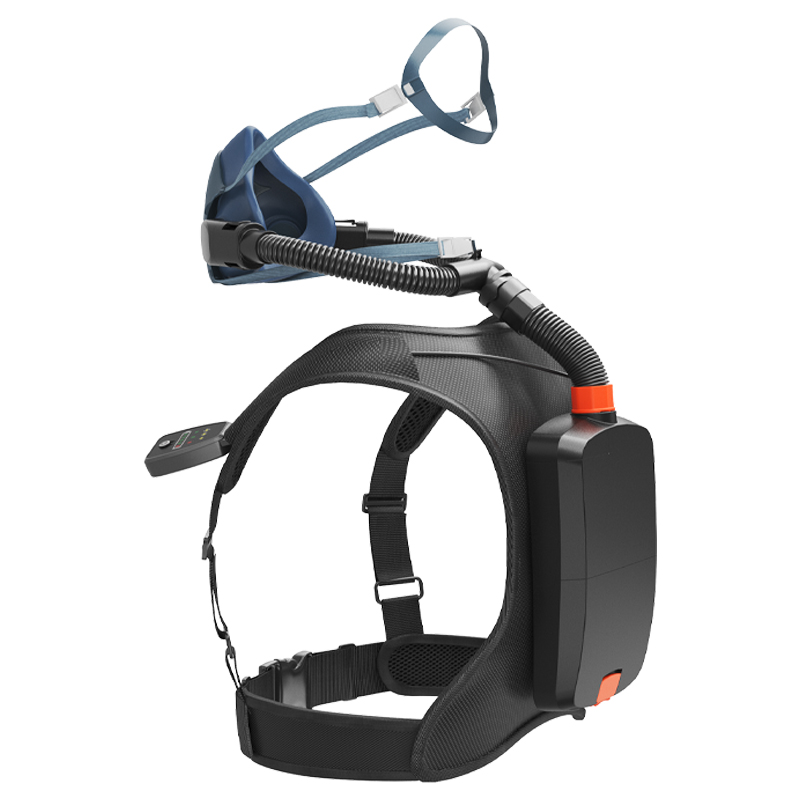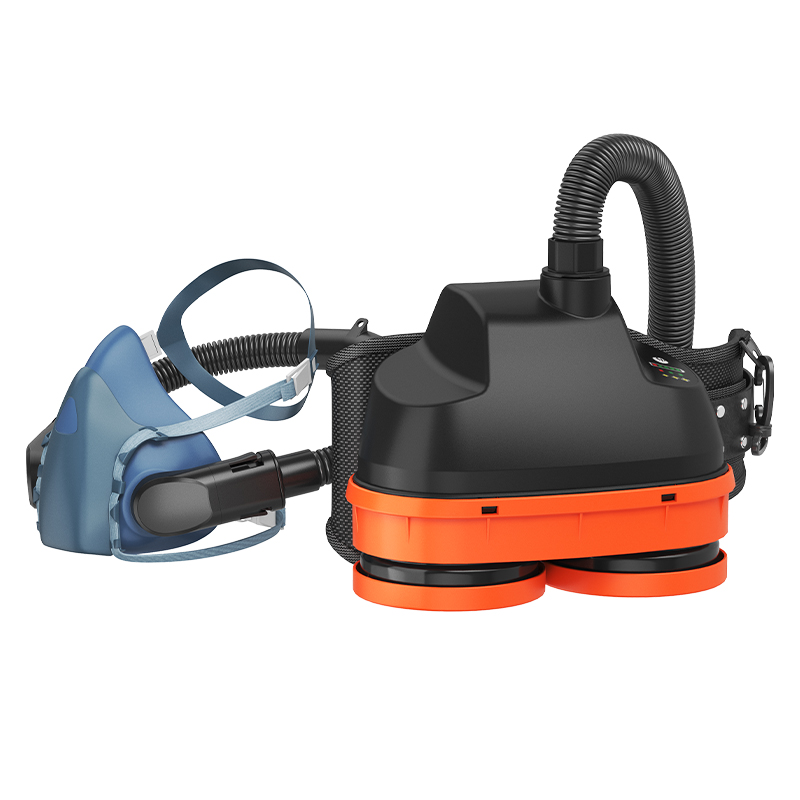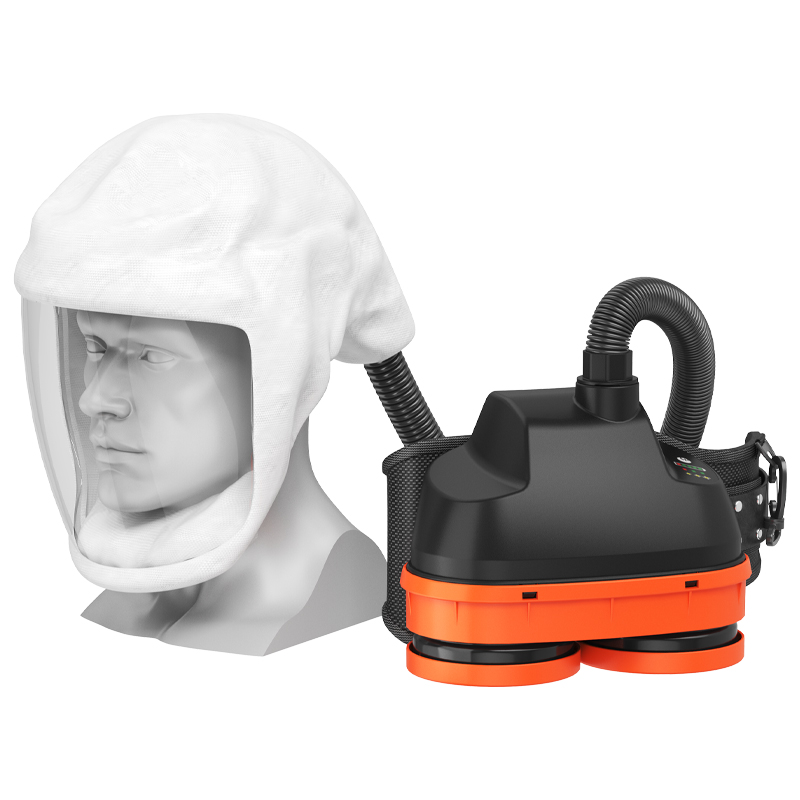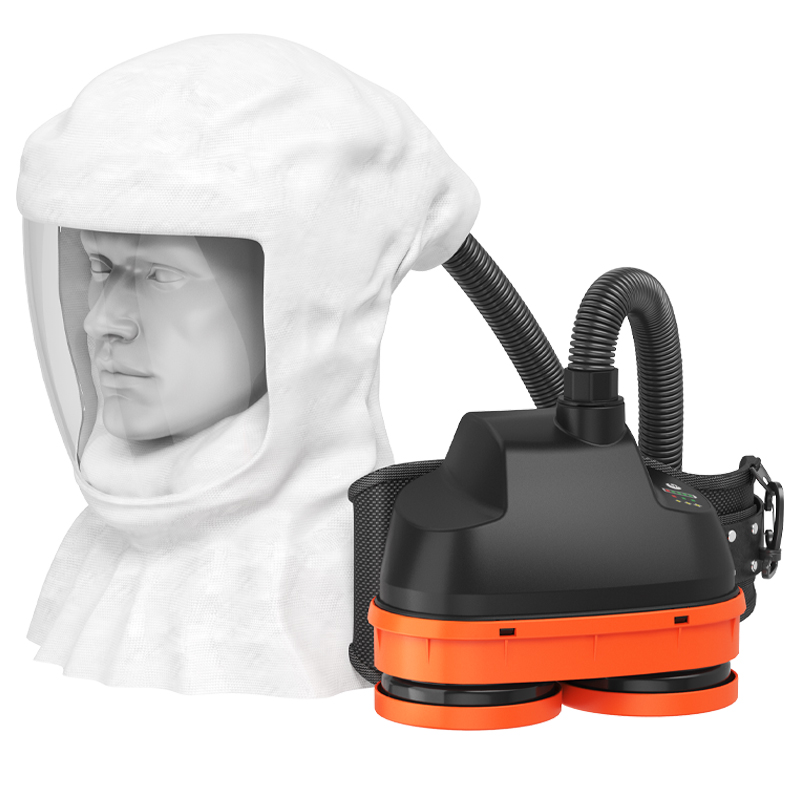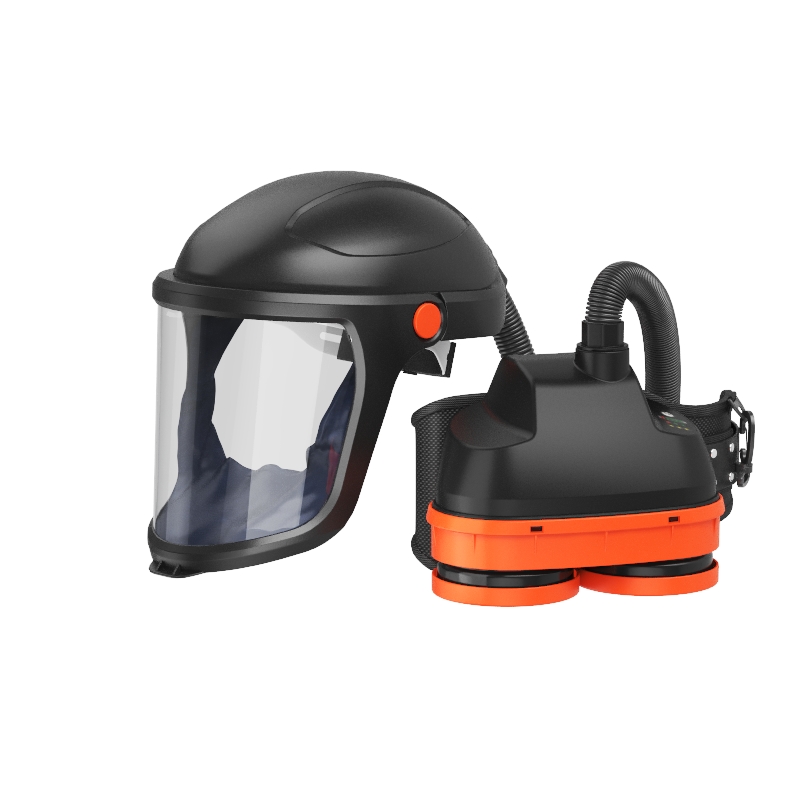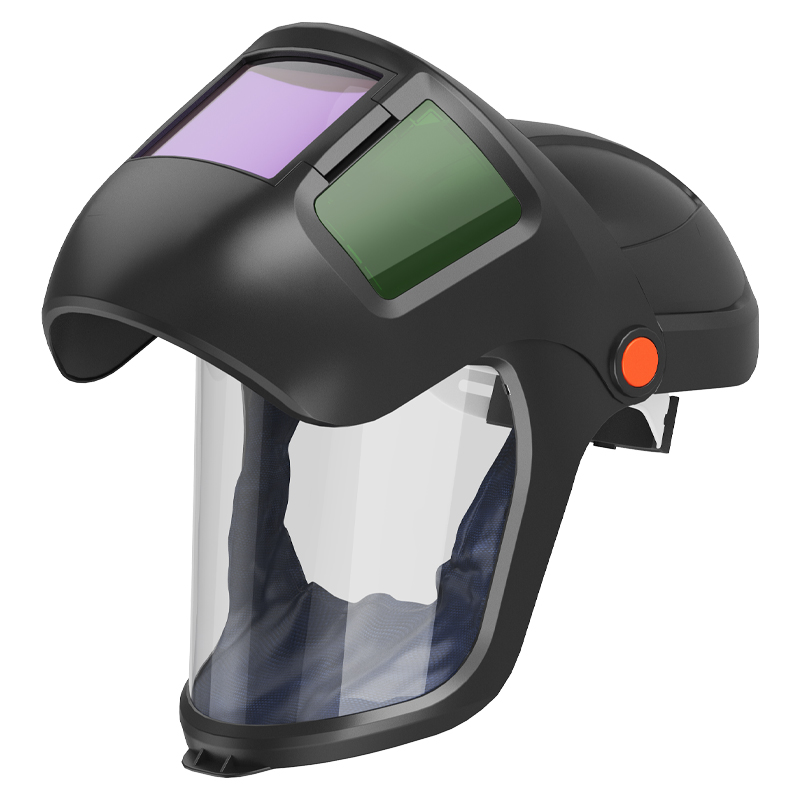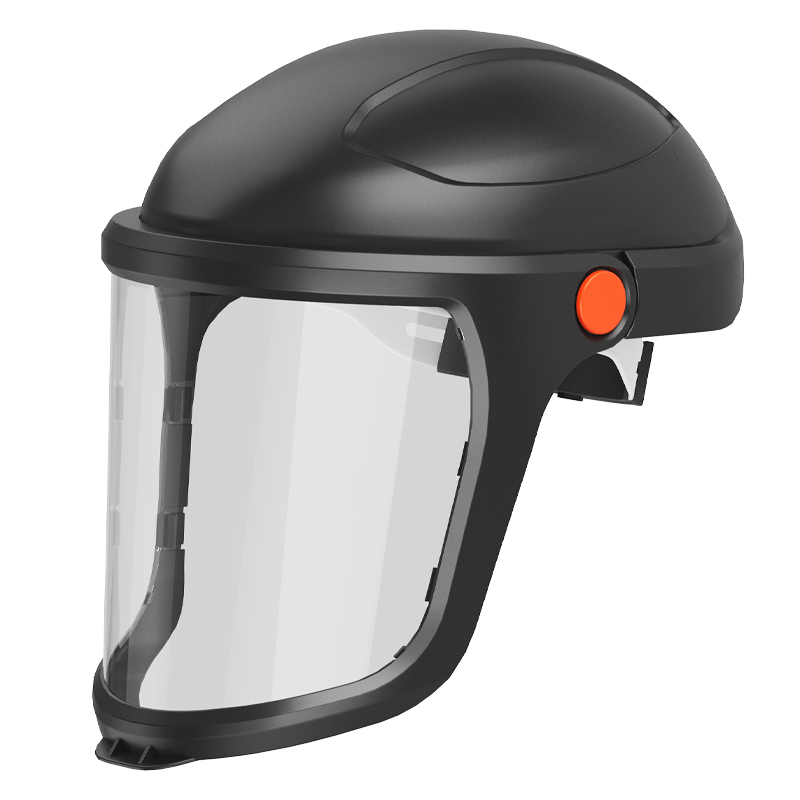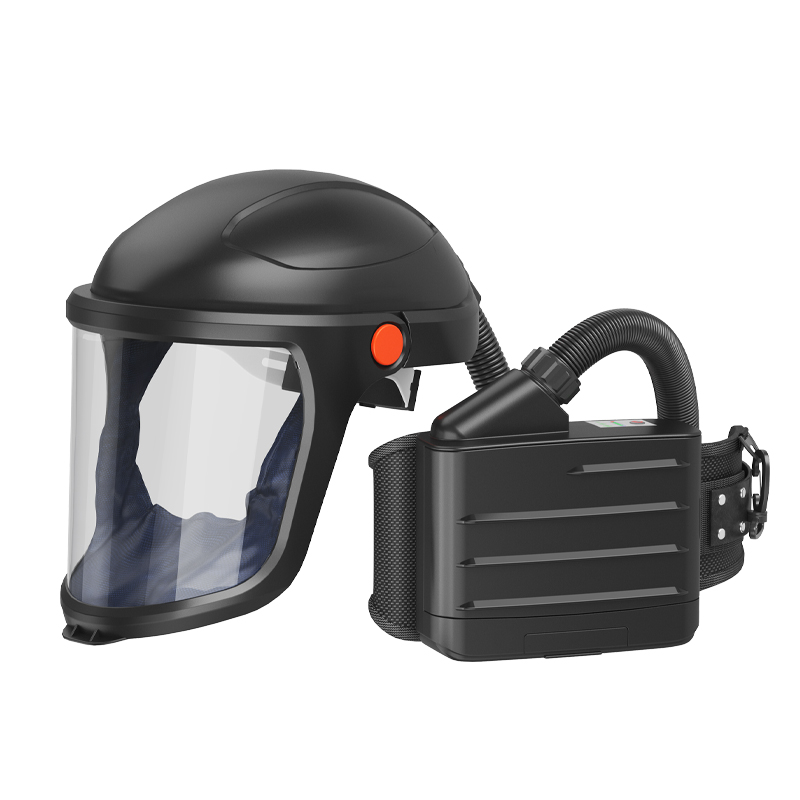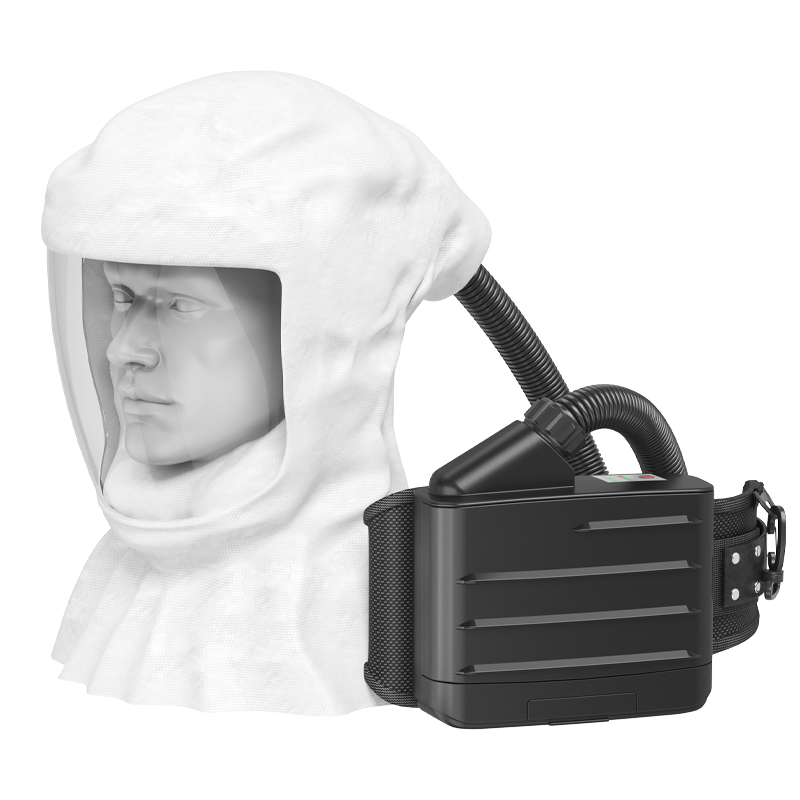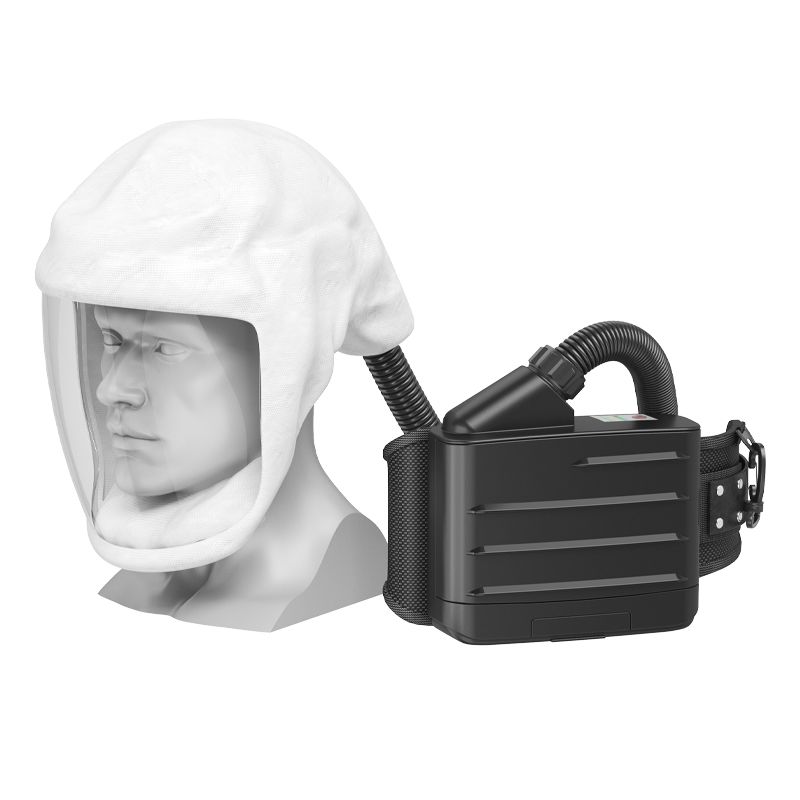In spraying operations, a PAPR (Powered Air-Purifying Respirator) is a core respiratory protection device. Its primary function is to actively filter toxic and harmful contaminants generated during spraying, provide clean breathing air for operators, and at the same time, adapt to the operational needs of spraying scenarios through its positive-pressure design, balancing protection safety and operational convenience. Its specific functions can be broken down into the following three points:
Spraying operations produce large quantities of substances that are highly harmful to the respiratory system. Equipped with a combined filtration system of "particulate filter cotton + organic vapor/acid gas cartridge", the PAPR can accurately trap:
- Spray paint mist (e.g., tiny droplets formed by the atomization of solvent-based or water-based coatings). Long-term inhalation can cause these droplets to adhere to the mucous membranes of the respiratory tract, leading to chronic bronchitis, asthma, and other conditions;
- Toxic solvent vapors (e.g., volatile organic compounds such as benzene, toluene, xylene, and formaldehyde contained in paint). Some of these compounds are carcinogenic; short-term inhalation can cause dizziness and nausea, while long-term exposure damages the nervous system and hematopoietic function;
- Pigment/additive dust (e.g., solid particles from metallic pigments and rust inhibitors). Some contain heavy metal components, which can deposit in the lungs after inhalation and cause occupational lung diseases. This fundamentally blocks contaminants from entering the human respiratory tract.
Spraying operations often require operators to adjust their postures frequently (e.g., bending over or turning around to spray hard-to-reach corners of workpieces). Traditional filtering masks tend to leak due to reduced fit, but the positive-pressure feature of the PAPR specifically solves this problem:
- The electric fan delivers a continuous air supply, creating a stable positive pressure inside the face mask/hood, which actively prevents external contaminants from seeping in through gaps in the mask (especially in spraying environments where contaminant concentrations are high and diffusion is rapid, positive pressure can significantly reduce leakage risks);
- Simultaneously, the positive-pressure air supply reduces breathing resistance, preventing operators from feeling fatigued due to strenuous breathing over long periods. (Spraying operations often require continuous work for several hours, and the low-resistance design improves wearing comfort and reduces distractions during operation.)
Spraying operations have high requirements for the "compatibility" and "field of vision" of protective equipment. The PAPR meets practical operational needs through scenario-specific design:
- It can be paired with transparent full-face masks or spray-specific hoods. The mask visor is anti-fogging and resistant to paint mist adhesion, ensuring operators have a clear view of the spraying area and avoiding uneven coatings caused by blurred vision;
- Some models feature a lightweight body and flexible hose design, so operators do not feel significant restrictions when moving with the device, and it does not affect the precise operation of handheld spray guns (e.g., fine spraying, edge touch-ups, etc.);
- Its battery life is adapted to the duration of spraying operations (usually 4–8 hours), eliminating the need for frequent shutdowns to replace batteries or filter components, reducing work interruptions and improving spraying efficiency.
